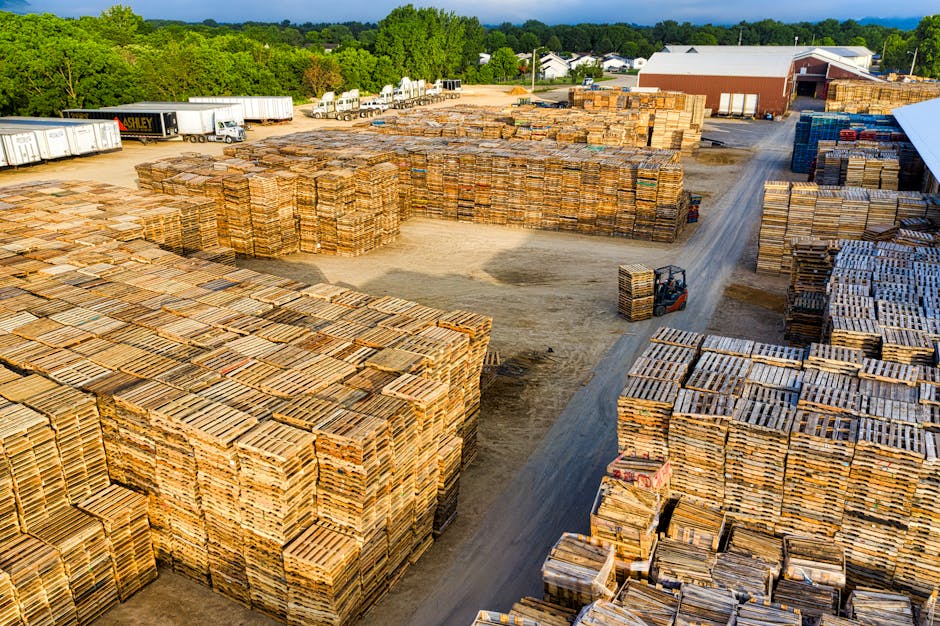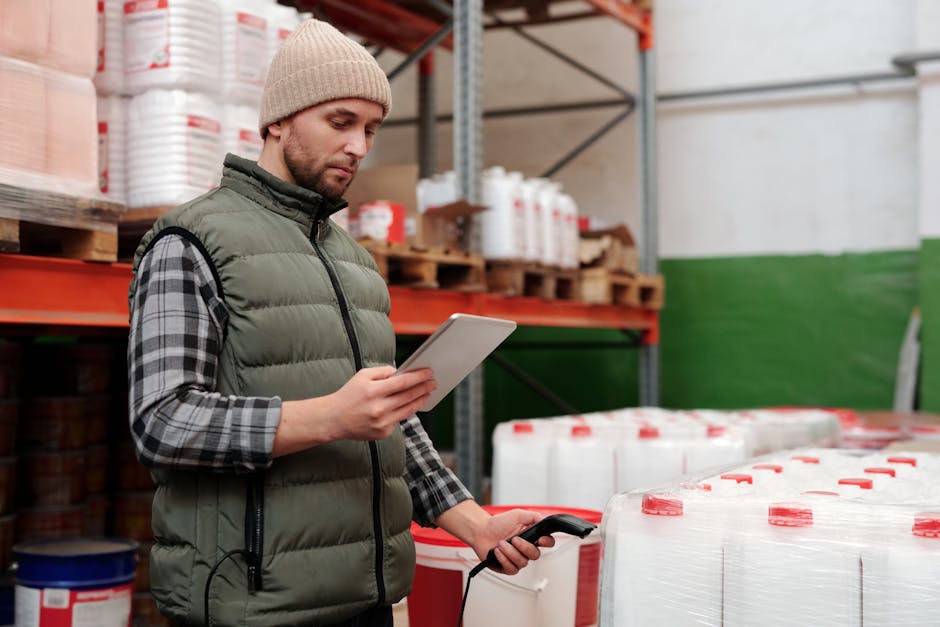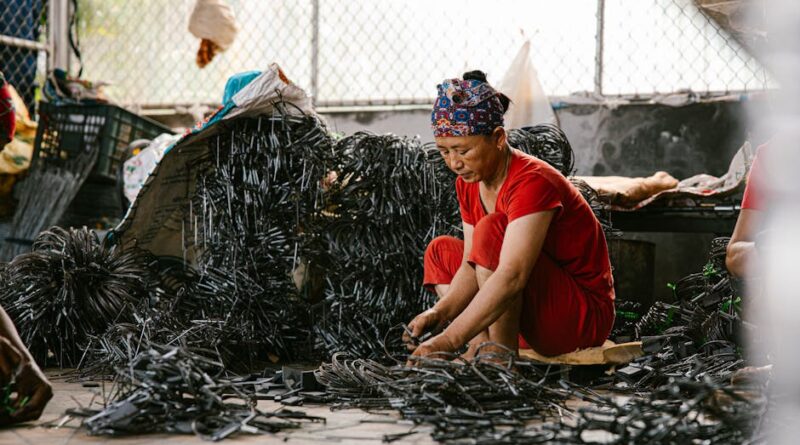Eco-Friendly Practices for Warehouse Management
Are you looking to make your warehouse more eco-friendly? you’re not alone! Many businesses aim to reduce their impact on the environment. In fact, studies show that going green can lower costs and improve efficiency. Lets explore some practical, eco-friendly practices for warehouse management.
What Are Eco-Friendly Practices?

Eco-friendly practices help reduce waste and conserve resources. These methods are not just good for the planet; they can also boost your bottom line. Think of it this way: when you save energy and reduce waste, you save money. Plus, customers appreciate businesses that care about the environment.
Why Should Warehouses Go Green?

There are many reasons to adopt eco-friendly practices:
- Cost Savings: Lower energy bills can lead to significant savings.
- Improved Reputation: Customers prefer brands that are environmentally conscious.
- Compliance: Many regions have laws promoting sustainability.
According to the EPA, warehouses that implement green practices can see a reduction in operating costs by up to 30%!
What Are Some Simple Steps to Go Green?

Here are some effective strategies to make your warehouse eco-friendlier:
- Energy Efficiency: Switch to LED lighting and energy-efficient equipment.
- Waste Reduction: Implement recycling programs.
- Water Conservation: Use low-flow fixtures and rainwater harvesting systems.
Let’s break these down further.
How Can Energy Efficiency Help?

Energy-efficient lighting, like LED bulbs, uses less power. They last longer too! For example, an LED bulb can last up to 25 times longer than a standard bulb. This means fewer replacements and lower energy bills.
Additionally, consider using energy-efficient machinery. These machines often use less power and can be more efficient. You might think they are expensive, but the savings on your electricity bill will quickly make up the difference.
What About Waste Reduction?
Every warehouse generates waste, from packaging materials to broken pallets. Reducing waste not only helps the environment but also cuts costs.
- Recycling: Set up recycling bins throughout your warehouse. Make sure they’re clearly marked.
- Composting: If you have a cafeteria, compost food waste instead of sending it to a landfill.
- Donating: Consider donating items that are no longer needed.
For instance, rather than tossing out old cardboard boxes, recycle them instead. Many companies are willing to pick them up for free!
Can Water Conservation Make a Difference?
Yes, it can! Water is a precious resource, and warehouses often use a lot of it. Here are some ways to conserve water:
- Low-Flow Fixtures: Install low-flow faucets and toilets to reduce water usage.
- Rainwater Harvesting: Collect rainwater for landscaping needs.
Even small changes can add up. For example, a low-flow toilet can save up to 1.6 gallons per flush!
How Can Green Packaging Help Your Warehouse?
Packaging is a big part of warehouse operations. Going green with packaging can significantly reduce waste. Here are some ideas:
- Use Recyclable Materials: Choose boxes and packing materials made from recycled content.
- Reduce Packaging Size: Use smaller boxes to reduce material use.
- Offer Reusable Options: Encourage customers to return packaging for reuse.
Think of it like this: when you buy a new phone, it often comes in a small, reusable box. This type of packaging not only looks good but is also better for the planet!
What Role Does Technology Play?
Technology can significantly improve eco-friendly practices in your warehouse. Here are some tech solutions:
- Warehouse Management Systems: These systems help optimize storage and reduce waste.
- Energy Monitoring Software: Monitor energy use and find ways to save.
- Automated Equipment: Use robots for repetitive tasks to increase efficiency.
For example, a Warehouse Management System can help you track inventory better. This leads to fewer overstock situations and less waste overall.
How Can Employee Training Make a Difference?
Your team plays a vital role in eco-friendly warehouse management. Training them can make a big impact. Here are a few ideas:
- Raise Awareness: Teach employees about the importance of sustainability.
- Promote Best Practices: Encourage them to follow recycling and waste reduction practices.
- Incentives: Consider rewards for teams that hit sustainability goals.
For instance, you might host a Green Day where employees can share their ideas on improving sustainability.
What Are the Benefits of Going Green?
Switching to eco-friendly practices can bring numerous benefits:
- Cost Savings: Lower utility bills and waste disposal costs.
- Enhanced Brand Image: An eco-friendly reputation can attract more customers.
- Employee Satisfaction: Employees often feel proud to work for a sustainable company.
Research shows that companies with strong sustainability practices often perform better in the long run.
What Are Some Common Misconceptions?
Many people think that going green is too expensive or complicated. This isn’t true! Here are a few clarifications:
- Myth: Going green is too costly.
Fact: Initial investments can lead to long-term savings. - Myth: Sustainable practices are too complex.
Fact: Simple changes can have a big impact.
By addressing these misconceptions, you can inspire your team to embrace eco-friendly practices.
How Can You Start Today?
Ready to make your warehouse more eco-friendly? Here are some practical steps you can take today:
- Conduct an energy audit to identify areas for improvement.
- Set up recycling stations throughout your facility.
- Start a green team to lead sustainability efforts.
Remember, every little effort counts. Your warehouse can become a model of sustainability.
Conclusion: Take Action for a Greener Future
Eco-friendly practices in warehouse management are not just a trend; they are a necessity for a sustainable future. By implementing these strategies, you can save money, improve your reputation, and help the planet. Start with small steps and build from there. The journey toward a greener warehouse begins today!
For more information on sustainable practices, check out our post on sustainable warehouse operations. Together, we can make a difference!



